John Hurrell – 9 December, 2023
Using this line of a dozen multi-coloured beats, we can imagine a kind of musical score with percussive notes written on stacked parallel staves of notation. (Or words in a line from a poem with verbally articulated scansion.) Usually different systems of alternating contrasting qualities are established, only to be broken and then slyly reestablished. Each work is a distinctive individual—however when mixed together as parallel processes, some are consistently in sync; others are not, creating counter rhythms.
In this show of twelve intricate Nikolic paintings—each with their characteristic layering of ‘tunnelling’ concentric rectangles imposed via multiple coats of thin paint on canvas and frames—we see the artist has organised a subtle architectural intervention where the viewer’s eye travels not only around the four sides of each individual work that it encounters, but also in a horizontal linear direction along the whole group, traversing all four walls.
Using this line of a dozen multi-coloured beats—this suite, this totality—we can imagine a kind of musical score with percussive notes written on stacked parallel staves of notation. (Or words in a line from a poem with verbally articulated scansion.) Usually different systems of alternating contrasting qualities are established, only to be broken and then slyly reestablished. Each work is a distinctive individual—however when mixed together as parallel processes, some are consistently in synch; others are not, creating counter rhythms.
Five examples of such binary contrasting qualities are: thick ornate ‘Rococo’ frames of wood and moulded plaster versus simpler thin Modernist wooden frames; on the canvases, blurring centres of hot versus cold colours; on the centres again, fuzzy oblongs of dark versus pale tones; or alternating distances of densely packed shimmering parallel lines moving away from the outer frame edge and background white wall; and alternating vertically versus horizontally aligned rectangles.
Looking at these we see a rich merging of five stacked up streams, each with its own inflections, all blended together in unison but separately spaced apart sequentially for twelve rectangular units: twelve distinctive modes of pulsing with twelve unique sets of hue and edge-contour juxtapositions.
Syncopations occur as—if you are standing in the middle of the room—the works swirl around you, a few parts accelerating to form alliances with neighbours (or jumping over them), others slowing down. Fortuitous matching cadences suddenly appearing. In this orchestration, the elaborately coloured, gilded and framed paintings function as radiating hubs, shuffling back and forth horizontally, and propelling their directed energy through sequenced and interconnected nexuses. Enjoyed pried apart or amalgamated.
John Hurrell
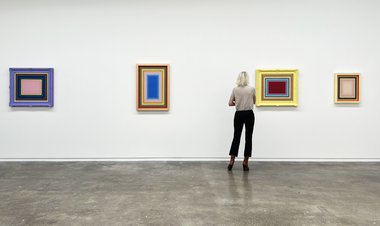
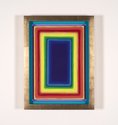
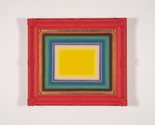
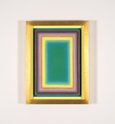
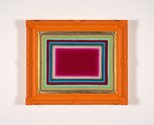
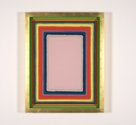
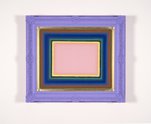
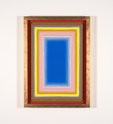
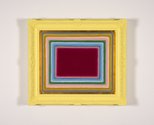

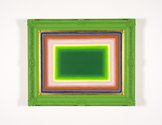
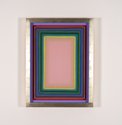
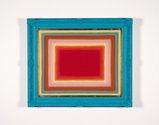
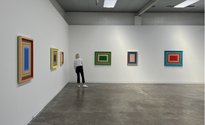
 Advertising in this column
Advertising in this column Two Rooms presents a program of residencies and projects
Two Rooms presents a program of residencies and projects



This Discussion has 0 comments.
Comment
Participate
Register to Participate.
Sign in
Sign in to an existing account.